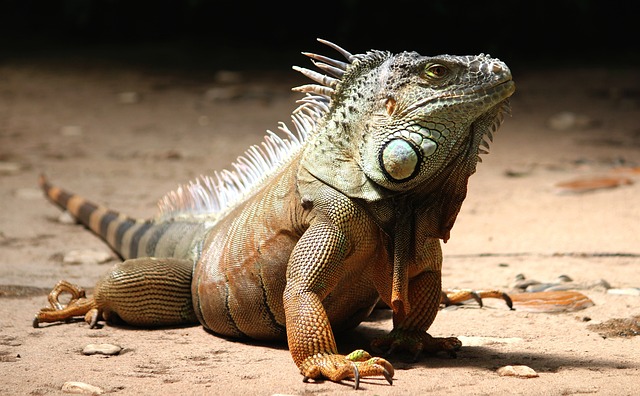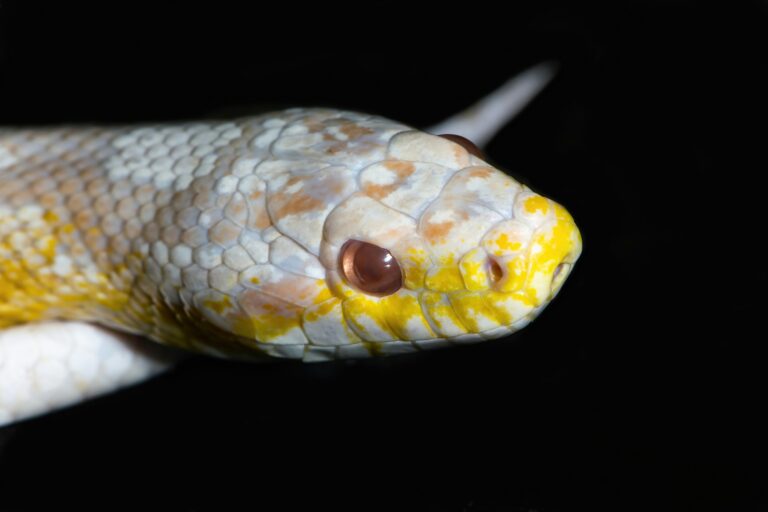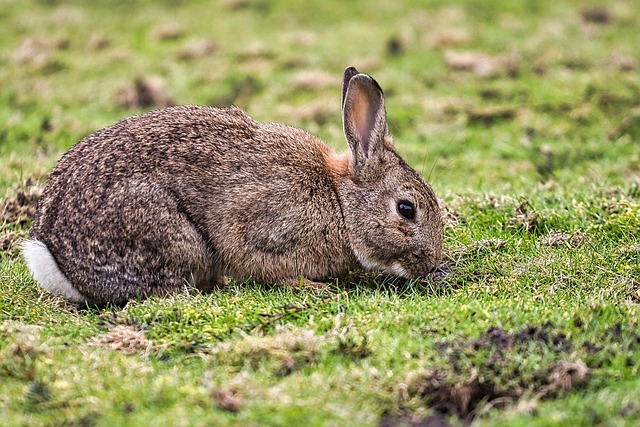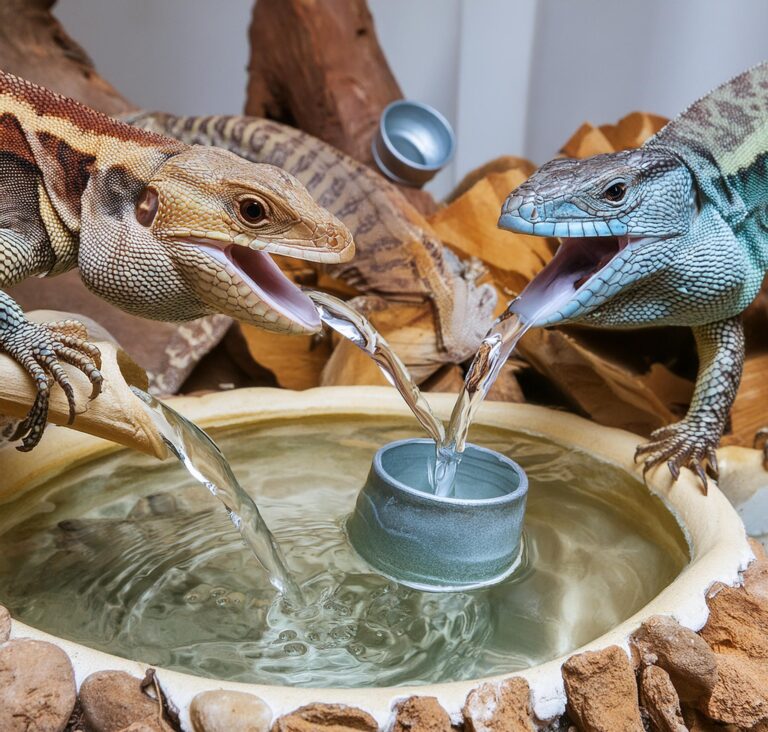Transform Your Aggressive Iguana into a Gentle Companion: A Step-by-Step Guide
Understanding aggressive behavior in iguanas
Aggression in iguanas can be a common issue that many reptile enthusiasts face. Understanding the underlying causes of aggression is the first step in transforming your scaly friend into a gentle companion. It’s important to note that aggression is a natural behavior for iguanas, especially during their breeding season or when they feel threatened. However, excessive aggression can hinder the bond between you and your pet.
One of the main causes of aggression in iguanas is improper handling or socialization. Iguanas are prey animals by nature and can feel vulnerable when approached or touched by humans. Other factors that contribute to aggressive behavior include inadequate diet, improper living conditions, or previous traumatic experiences. By identifying the triggers and causes of aggression, you can begin the process of taming your iguana.
To gain a better understanding of your iguana’s behavior, it’s crucial to observe their body language. Signs of aggression may include puffing up their body, hissing, tail whipping, or biting. By recognizing these cues, you can take the necessary steps to diffuse the situation and work towards building a positive relationship with your scaly companion.
The importance of taming an aggressive iguana
Taming an aggressive iguana is not only necessary for your own safety but also for the well-being of your pet. An aggressive iguana may become stressed, leading to health issues such as poor appetite or even self-harm. By investing time and effort into taming your iguana, you can create a harmonious living environment and enjoy the companionship of a gentle reptile.
Taming your iguana requires patience and consistency. It’s essential to approach the process with a calm and gentle demeanor, allowing your iguana to gradually become comfortable with your presence. Remember, trust cannot be built overnight, but with perseverance, you can transform your aggressive iguana into a docile companion.
Creating a safe and comfortable environment for your iguana
Creating a safe and comfortable environment for your iguana is crucial in reducing aggression and promoting overall well-being. Adequate space, proper lighting, and temperature control are essential factors to consider when setting up their habitat. Iguanas require a spacious enclosure with areas for basking, hiding, and climbing. Providing a variety of perches and hiding spots will allow your iguana to feel secure and reduce stress.
It’s important to maintain the right temperature and humidity levels within the enclosure. Iguanas are ectothermic animals, meaning they rely on external heat sources to regulate their body temperature. A basking spot with a temperature gradient is necessary to meet their thermoregulation needs. Additionally, providing UVB lighting is crucial for their overall health and calcium metabolism.
In addition to the physical environment, it’s essential to minimize external stressors that may contribute to aggression. Avoid loud noises, sudden movements, or overcrowding in the vicinity of your iguana’s habitat. Creating a calm and quiet space will help your iguana feel secure and reduce the likelihood of aggressive behavior.
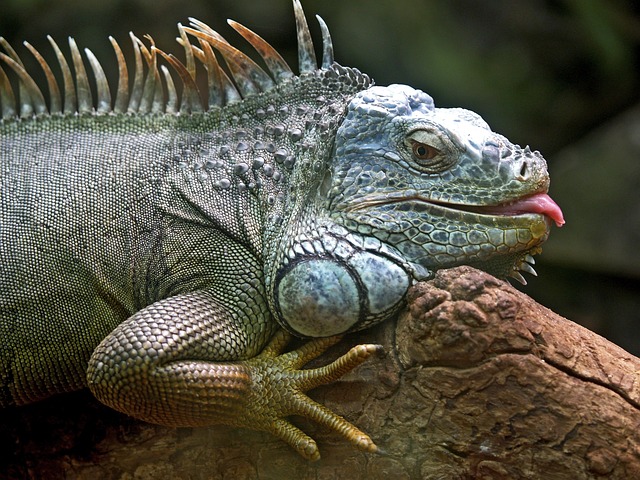
Building trust and establishing a bond with your iguana
Building trust is a fundamental step in transforming your aggressive iguana into a gentle companion. Trust takes time to develop, so be patient and allow your iguana to set the pace. Start by simply sitting near their enclosure and observing them without any direct interaction. This will help your iguana become accustomed to your presence.
Once your iguana shows signs of relaxation in your presence, you can gradually introduce gentle interactions. Start by offering food from your hand, allowing your iguana to associate your presence with positive experiences. Avoid sudden movements or loud noises that may startle or stress your iguana. Over time, your iguana will begin to trust you and feel more comfortable in your presence.
Regular handling is crucial in building a bond with your iguana. Start with short sessions, gradually increasing the duration as your iguana becomes more tolerant. Always support their body properly and avoid restraining them forcefully. Use a calm and gentle voice during handling sessions to help your iguana associate your touch with positive experiences.
Handling techniques for aggressive iguanas
Handling an aggressive iguana requires caution and proper techniques to ensure both your safety and the well-being of your pet. It’s important to remember that each iguana is unique, and what works for one may not work for another. Here are some general guidelines to follow when handling an aggressive iguana:
- Approach your iguana calmly and avoid sudden movements.
- Use a towel or reptile gloves to protect yourself from bites or scratches.
- Support your iguana’s body properly, ensuring they feel secure.
- Avoid restraining or forcing your iguana into a specific position.
- Gradually increase the duration of handling sessions as your iguana becomes more comfortable.
- If your iguana shows signs of distress or aggression during handling, gently return them to their enclosure and try again later.
Training exercises to reduce aggression in your iguana
Training exercises can be effective in reducing aggression and promoting positive behavior in your iguana. Positive reinforcement techniques, such as clicker training or target training, can help redirect their aggressive tendencies. Here are some training exercises to try with your iguana:
- Target training: Teach your iguana to touch a target stick with their nose or body. This exercise helps redirect their focus and reinforces positive behavior.
- Desensitization: Gradually expose your iguana to situations or stimuli that trigger aggression, such as handling or loud noises. Reward calm behavior to help them overcome their fears or anxieties.
- Food rewards: Use treats or their favorite foods as rewards for good behavior and obedience. This positive reinforcement technique can motivate your iguana to display calmer behavior.
Consistency and patience are key when it comes to training your iguana. Always reward desirable behavior and avoid punishment, as it can increase fear and aggression.
Providing mental and physical stimulation for your iguana
Mental and physical stimulation is essential for the overall well-being of your iguana. A bored iguana is more likely to display aggressive behavior. Here are some ways to provide enrichment for your scaly companion:
- Provide climbing opportunities: Iguanas are arboreal creatures and enjoy climbing. Offer branches, perches, or platforms within their enclosure to encourage natural behavior.
- Offer puzzle feeders: Use puzzle feeders or food-dispensing toys to stimulate their foraging instincts. This provides mental stimulation and keeps them engaged.
- Rotate toys and decorations: Regularly change the toys and decorations within their enclosure to keep things interesting. This prevents boredom and encourages exploration.
Remember to monitor your iguana’s behavior and adjust the level of stimulation accordingly. Some iguanas may prefer more or less interaction, so it’s important to cater to their individual needs.
Dietary considerations for a calmer iguana
Diet plays a significant role in your iguana’s overall health and behavior. Providing a balanced and nutritious diet can help reduce aggression and promote a calmer demeanor. Here are some dietary considerations for a calmer iguana:
- Offer a variety of greens: The majority of your iguana’s diet should consist of dark, leafy greens such as collard greens, mustard greens, and dandelion greens. These provide essential nutrients and promote good digestion.
- Supplement with fruits and vegetables: Offer a variety of fruits and vegetables as occasional treats. These can include bell peppers, carrots, and berries. Avoid feeding excessive amounts of fruits, as they are high in sugar.
- Calcium supplementation: Ensure your iguana’s diet includes adequate calcium to support bone health. Calcium supplements or calcium-rich foods such as calcium dusted greens can be beneficial.
Proper nutrition is essential for a healthy and well-behaved iguana. Consult with a reptile veterinarian or specialist to ensure your iguana’s diet meets their specific nutritional requirements.
Seeking professional help for aggressive iguanas
In some cases, seeking professional help may be necessary to address aggression in your iguana. A reptile behaviorist or veterinarian with experience in reptile behavior can provide valuable guidance and support. They can assess your iguana’s behavior, identify any underlying health issues, and develop a customized plan to address aggression.
When seeking professional help, it’s important to choose someone who has a deep understanding of reptile behavior and welfare. Ask for recommendations from other reptile owners or consult reputable reptile organizations for referrals.
Conclusion
Transforming your aggressive iguana into a gentle companion is possible with the right knowledge, patience, and dedication. By understanding the underlying causes of aggression, creating a safe environment, building trust, implementing proper handling and training techniques, providing mental and physical stimulation, considering dietary factors, and seeking professional help when needed, you can develop a harmonious bond with your scaly friend.
Remember, each iguana is unique, and the process of taming may take time. Don’t get discouraged by setbacks, and always approach the journey with a positive mindset. With consistent effort and love, you can transform your aggressive iguana into the gentle companion you’ve always wanted.
Must Read : Secrets of Sulcata Tortoise Hibernation: Prepare for an Incredible Journey
